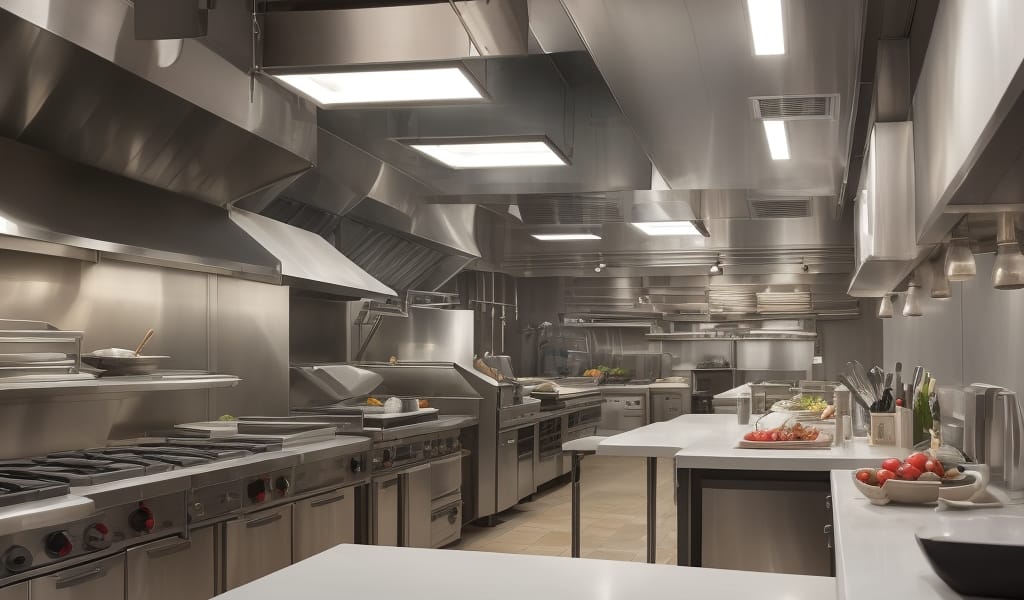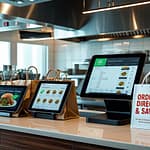Key Takeaways:
- Use the provided cleaning checklist daily to maintain restaurant hygiene.
- Prioritize daily tasks to ensure a clean and safe environment in your kitchen operations.
- Implement the cleaning checklist as a standard for staff to promote consistency and efficiency.
- Utilize the checklist to identify and address areas of improvement in your restaurant’s cleanliness.
- Regular use of the cleaning checklist can help avoid health code violations and enhance customer satisfaction.
Free Download: Daily Cleaning Checklist
Stay on top of cleanliness with this checklist
Running a successful restaurant demands more than offering delicious dishes and exceptional customer service. Maintaining impeccable cleanliness is crucial, not only for health and safety compliance but also for enhancing customer satisfaction and preserving your establishment’s reputation. A daily cleaning checklist is an essential tool that simplifies this task, making it easier for your staff to manage routine hygiene duties efficiently.
In this guide, we’ll explore why a comprehensive cleaning checklist matters, outline practical steps to implement one effectively, and provide actionable advice to keep your restaurant spotless every day.
Why a Daily Cleaning Checklist is Essential for Your Restaurant
Ensuring Compliance with Hygiene Regulations
Restaurant hygiene standards are strictly regulated by local health departments and food safety authorities. A detailed daily cleaning checklist helps your staff consistently meet these regulations, minimizing the risk of violations during inspections. By having clear daily routines, you ensure that every critical area and equipment piece receives proper attention.
Improving Staff Accountability and Productivity
A clear and concise cleaning checklist assigns specific responsibilities to team members, improving individual accountability. Employees know exactly which tasks they need to complete each shift, reducing confusion and increasing productivity. The checklist also serves as a reliable way to track staff performance and identify areas needing improvement or extra training.
Elevating Customer Experience and Satisfaction
Customers notice cleanliness immediately upon entering your restaurant. A clean dining area, spotless dishes, and immaculate restrooms send a powerful message about the overall quality of your establishment. Consistently maintaining these standards through a structured daily cleaning checklist enhances customer trust and encourages repeat visits.
Creating an Effective Daily Cleaning Checklist for Your Restaurant
Identify Key Areas to Include
When developing your cleaning checklist, consider all critical spaces and equipment in your restaurant. Common areas typically include:
- Dining area: tables, chairs, menus, and floors
- Kitchen: cooking surfaces, prep areas, ovens, grills, fryers, refrigerators
- Restrooms: toilets, sinks, mirrors, floors, dispensers
- Storage areas: shelves, freezers, refrigerators, dry storage spaces
- Entrance and waiting area: doors, windows, seating, floors
Listing these areas clearly ensures every critical spot is cleaned regularly, leaving no room for oversight.
Break Down Tasks by Frequency
Not all cleaning tasks need to be completed daily. Clearly separate daily tasks from weekly or monthly duties to keep your checklist manageable and realistic. Daily tasks may include sanitizing surfaces, sweeping floors, and cleaning restrooms. Weekly or monthly tasks, like deep-cleaning ovens or refrigeration units, should be documented separately to avoid confusion.
Assign Specific Staff Responsibilities
Clearly define who performs each cleaning task. Assigning responsibilities helps distribute workload fairly and ensures accountability. For example, kitchen staff may handle cooking equipment cleaning, servers may maintain dining area cleanliness, and management might oversee restroom inspections. Clearly communicating these roles helps streamline your daily cleaning process.
Practical Tips for Implementing Your Restaurant Cleaning Checklist
Clearly Display the Checklist
Ensure the cleaning checklist is prominently displayed where employees frequently gather, such as the kitchen or staff room. Regular visibility keeps cleaning tasks top-of-mind and ensures team members regularly review their duties.
Provide Training and Resources
Proper training is essential for effective cleaning. Provide your staff with detailed instructions on using cleaning products safely and effectively. Regular refresher sessions reinforce these practices, ensuring consistency and compliance. Ensure all necessary cleaning supplies are readily available and adequately stocked to prevent delays or incomplete tasks.
Schedule Regular Inspections and Feedback
Conduct regular inspections to verify staff adherence to the cleaning checklist. Offer constructive feedback to staff members, recognizing excellent performance and addressing any shortcomings. Regular oversight emphasizes the importance of cleanliness and encourages continuous improvement among your team.
Restaurant Hygiene in Action: A Case Study
How a Daily Cleaning Checklist Improved Efficiency at a Local Bistro
Consider the case of “The Green Fork Bistro,” a popular local restaurant that struggled initially with inconsistent cleanliness and frequent health inspection warnings. Management introduced a detailed daily cleaning checklist, clearly outlining responsibilities and tasks for each employee.
Within weeks, staff accountability increased significantly, reducing confusion around cleaning duties. Health inspection scores improved dramatically, with The Green Fork Bistro receiving praise for exceptional cleanliness from inspectors. Customer satisfaction surveys also indicated an increased perception of overall dining experience quality, directly credited to visible improvements in hygiene standards.
This example demonstrates the tangible benefits of adopting a structured daily cleaning checklist and underscores its role in successful restaurant operations.
Common Mistakes to Avoid in Your Cleaning Routine
Overlooking Less Visible Areas
Areas behind cooking equipment or under counters often receive less attention but can accumulate dirt and grime over time. Ensure your cleaning checklist explicitly mentions these less-visible spaces to prevent buildup that can negatively impact hygiene and attract pests.
Neglecting Regular Checklist Updates
Restaurants evolve, and your cleaning checklist should reflect these changes. Regularly review and update your checklist to ensure ongoing effectiveness. New equipment or layout changes might require adjustments to cleaning tasks or frequency.
Ignoring Staff Input and Suggestions
Your staff regularly interact with cleaning tasks and may have valuable insights into improving efficiency or effectiveness. Encourage employees to share ideas or suggestions about your cleaning checklist, fostering a collaborative environment and enhancing compliance.
Conclusion: Maintaining Exceptional Restaurant Hygiene Every Day
A comprehensive daily cleaning checklist is more than just a hygiene tool—it’s a strategic asset that supports regulatory compliance, increases staff productivity, and enhances customer satisfaction. By clearly identifying critical areas, breaking down tasks by frequency, assigning specific responsibilities, and regularly training and inspecting, your restaurant can consistently maintain high cleanliness standards.
Remember, cleanliness directly reflects your commitment to quality and customer care. Implementing an effective cleaning checklist today can significantly enhance your restaurant’s reputation, operational efficiency, and overall success.






Comments
Be the first to comment on this article.